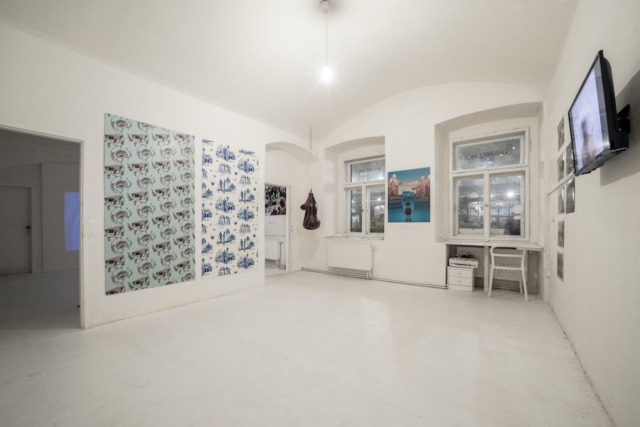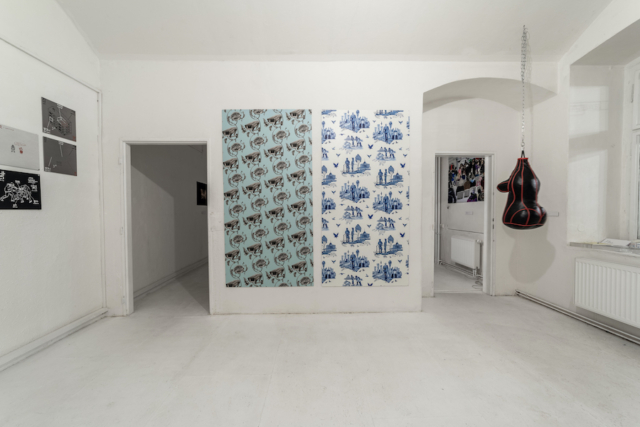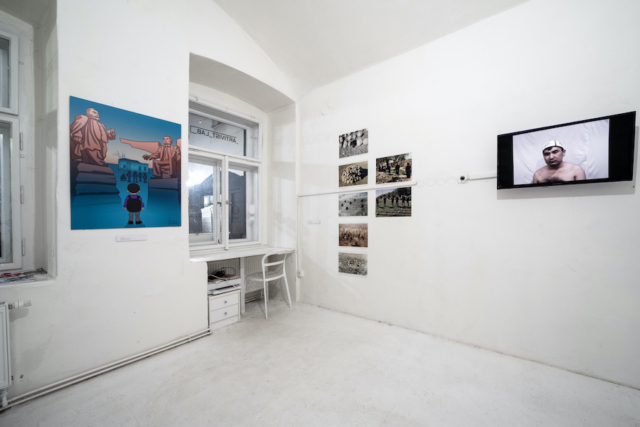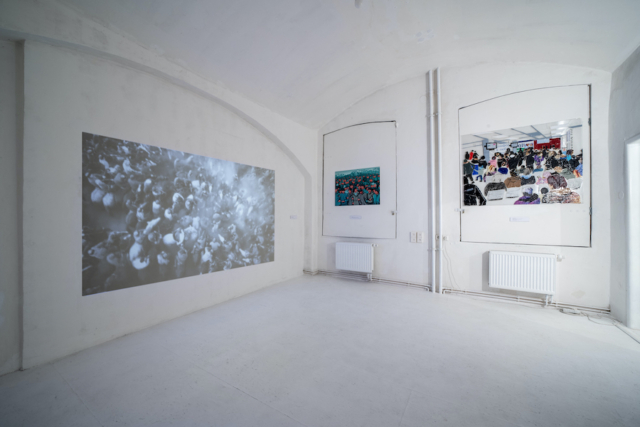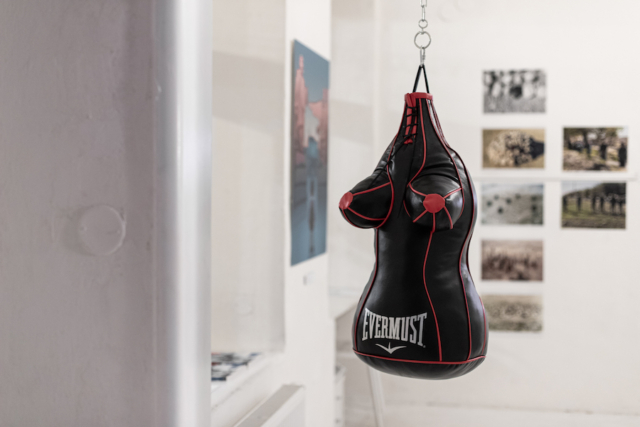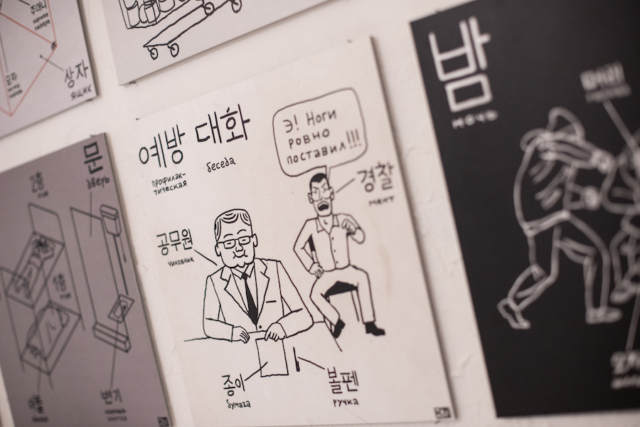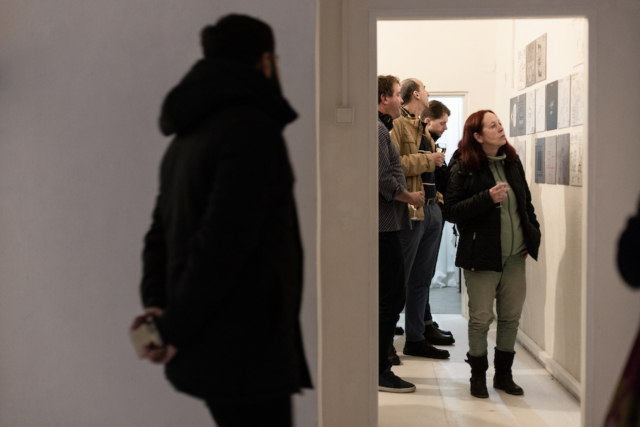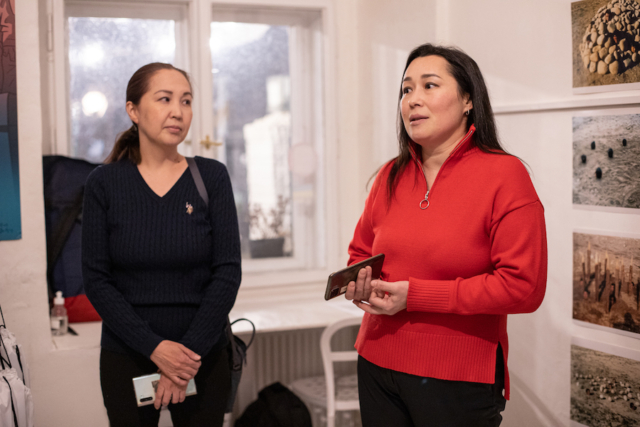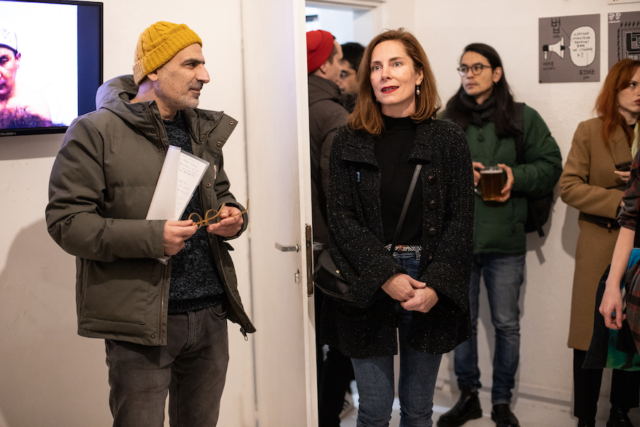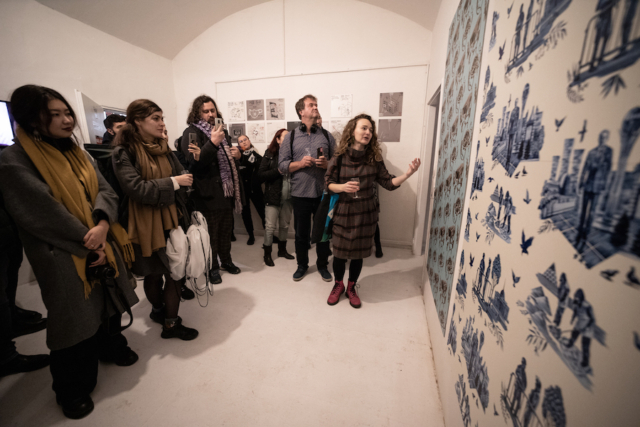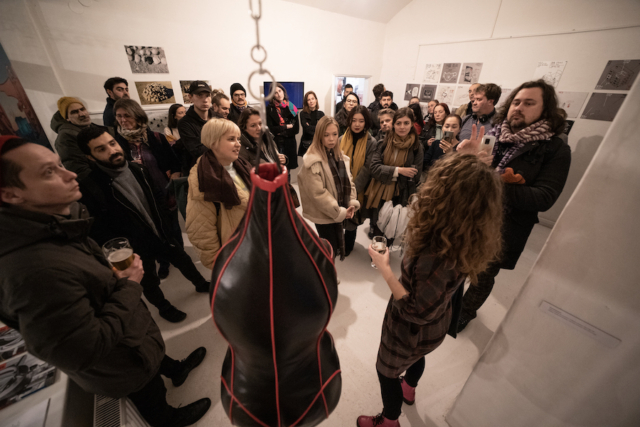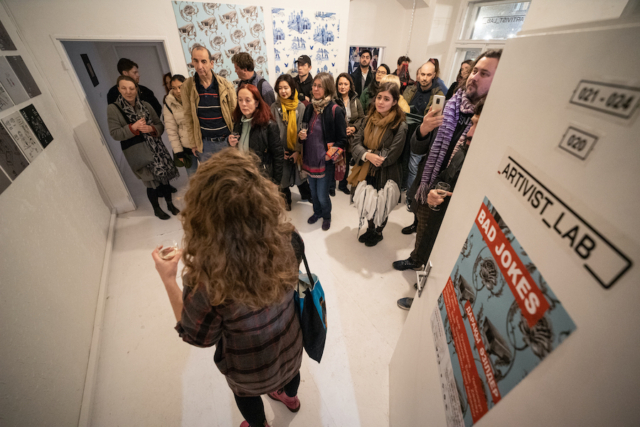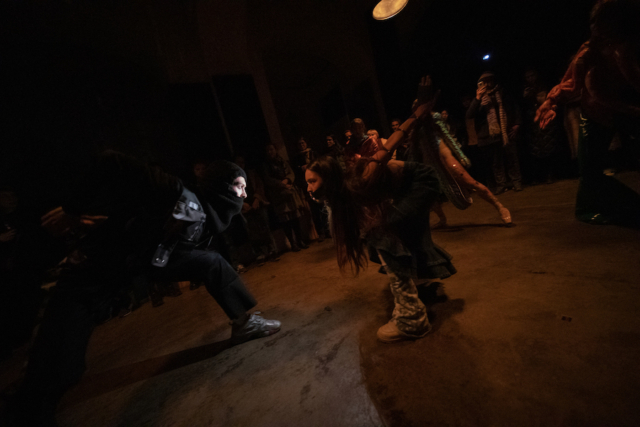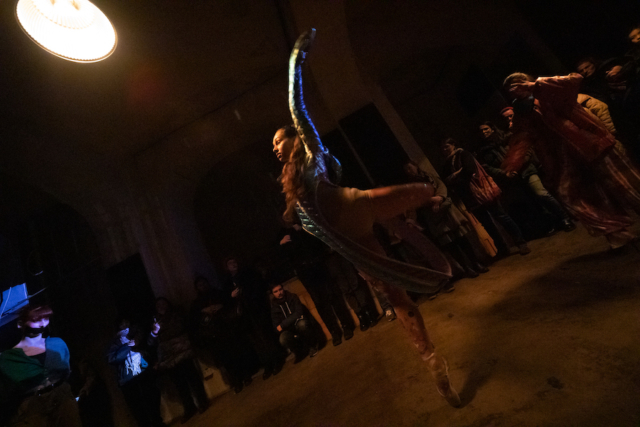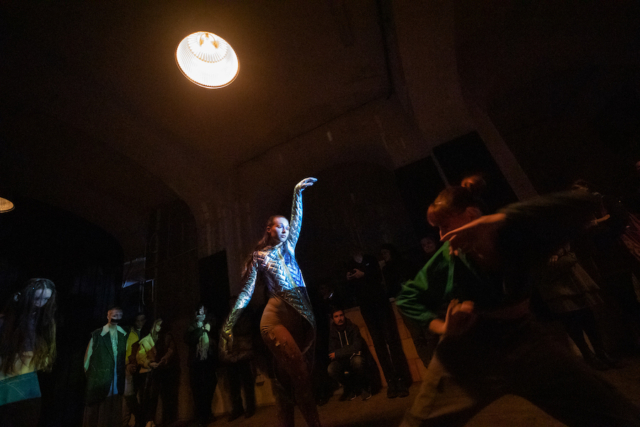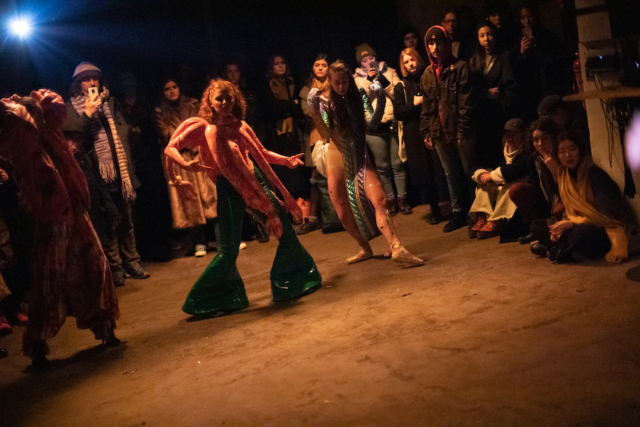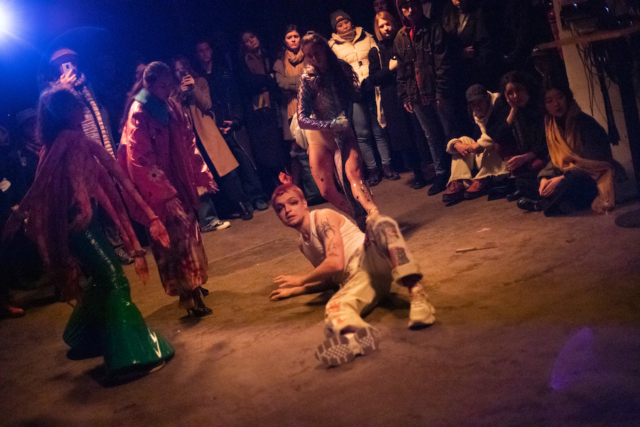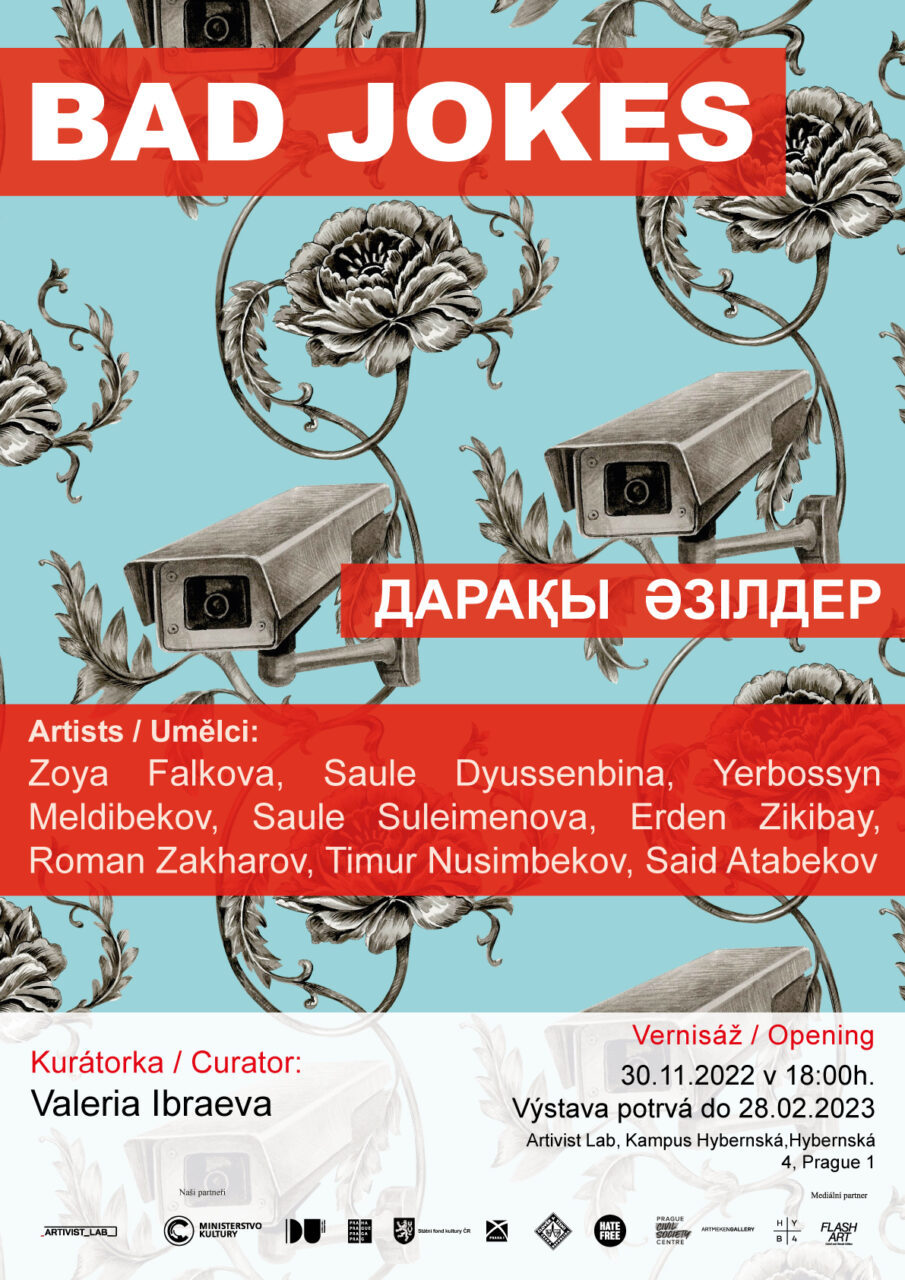for English – scroll down
Vystavující umělci: Zoya Falkova, Saule Dyussenbina, Roman Zacharov, Yerbossyn Meldibekov, Said Atabekov, Saule Suleimenova, Yerden Zikibay, Timur Nusimbekov
Kurátorka: Valeria Ibraeva
Výstava “Bad Jokes” byla poprvé uvedena v tzv. kulturním hlavním městě Kazachstánu – Almaty v roce 2018, poté v roce 2019 v oficiálním hlavním městě – Astaně. Koncepce výstavy analyzuje stav lidských práv v Kazachstánu – problém zcela nový pro krátkou, pouze stoletou historii umění země, která během této doby změnila status sovětské socialistické republiky na nezávislou republiku.
Výstava se pokouší určit míru skutečné demokracie v republice pod superprezidentskou vládou, nastínit hranici mezi stavem poslušnosti obyvatelstva a odporem společnosti, její připraveností uznat a změnit systém „fasádní demokracie“ v situaci autoritářství, z velké části využívající dědictví sovětské moci.
Většina vystavených děl uvádí fakta, což je samo o sobě prvním krokem k odporu, protože blažené pracovní úspěchy na pozadí idylických krajin už jsou dlouho považovány za hluboce archaické. Současní umělci často používají téměř novinářsky znějící vyprávění: zákazy svobody shromažďování, násilí na ženách a dětech, vyčerpávající pracovní podmínky, kult prezidentovy osobnosti.
Mladý umělec Roman Zakharov se učí korejský jazyk pozorováním života kolem sebe. Jeho cyklus #shalakoreanwithroman jsou listy ze sešitu, v nichž jsou načrtnuty každodenní pouliční scény, opatřené překlady do studovaného jazyka. Jde o bití obušky, rozehnání protestních shromáždění a umístění do cely předběžného zadržení.
Obraz Yerdena Zikibaye je na první pohled sladkou až vlasteneckou scénou: uprostřed kompozice je postava malého chlapce, kterou lemují dva pomníky – velkého básníka 19. století Abaie a prvního prezidenta Kazachstánu Nursultana Nazarbajeva. Tento obrázek se jmenuje „Jmenovec“ (2018). Jeho vzniku předcházela novinářská zpráva, která šokovala celou zemi: chlapec Nursultan, který žil ve vesnici Abai, byl několik let znásilňován spolužáky – a všichni vesničané o tom věděli. Navíc chlapcova babička, která se opakovaně obracela na orgány činné v trestním řízení, nemohla dostat žádnou reakci, protože příbuzní násilníků zaujímali vysoké pozice ve správě.
Roztomilá kreslená forma, do které umělec balí nemilosrdný obsah, je ve skutečnosti reprezentací naší fasádní demokracie, kdy je na povrchu všechno krásné a moderní – například existuje elektronické hlasování a volební debaty, ale ve skutečnosti jsou pod povrchem nacpané ošklivé volební lístky, korupční schémata fungují a „všechno už bylo rozhodnuto bez nás“.
Yerbosyn Meldibekov vytvořil fotografický cyklus Pol Pot v roce 2000 při práci na studii o povaze násilí. Po 18 letech viděl ve zpravodajství dokumentární fotografie, na kterých se téměř doslova opakovaly jeho fantazie. Lidé, kteří neplnili výrobní úkoly, byli nuceni držet v rukou obrovské kameny a byli zahnáni do zavlažovacího kanálu.
Poslušnost lidu je skutečně bezmezná, což Meldibekov uvádí ve velmi jednoduchém, ale velmi symbolickém videu „Pastan 2“ (2003), ve kterém se zdánlivě nic neděje: jen bez přestání plácají člověka po tvářích. Umělec tímto dílem uštědřil silnou facku celé dlouhodobě trpící společnosti. Stejně silné je pobouření Zoyi Falkové v její plastice Evermust (2018), která ironicky vyzývá k použití pěstí. Což ovšem opakovaně dělali vynalézaví návštěvníci výstav. Stejná zlá ironie je přítomna v „tapetě“ od Saule Dyusenbinou, kde se sledovací kamera stává součástí dekorace. V případě Architektonické ozdoby se postava prezidenta proměňuje v nedílnou součást městské krajiny, což je na jedné straně vzhledem k přibývajícím památkám na něj čistá pravda, na druhou stranu, to je naprostý výsměch.
S ohledem na vědomí lhostejnosti k člověku a zákonu uvažují umělci z různých úhlů, jako když skládají Rubikovu kostku – od konstatování faktu přes kritiku a výsměch, od historických paralel k širokým zobecněním a přímému odporu v ulicích Almaty. Umělecký aktivismus je poměrně častým jevem.
Druhé dílo Yerdena Zikibaye Gulin Bolyp Yegilemin (Jsem květ vzešlý z tvé země) (2017) je verzí fotografie z roku 1986, kdy se mladí lidé shromáždili na hlavním náměstí v Almaty, aby protestovali proti koloniální politice sovětské vlády. Pak došlo k tvrdým zásahům a popravám ve Vilniusu, Baku, Tbilisi, ale z nějakého důvodu se velmi zřídka uvádí, že v Almaty začala série protestů před rozpadem Sovětského svazu.
Foto: Josef Rabara
Video Boj o čtverec od Saida Atabekova je natáčením národní hry „kokpar“ (roztržení kozy). Opravdu krutá, zběsilá akce, které se účastní mnoho mužů, kde obrovský dav kypí živelnou silou.
Tou samou, která se probudila v lednu 2022 a rychle se rozšířila po celém Kazachstánu. Protest začal stávkou ropných dělníků v Zhanaozenu a prohnal se každým městem v zemi. Je poměrně obtížné změřit emocionalitu davu, ale lze zaznamenat symbolická gesta odporu – policejní stanice byly rozbity a v jednom městě byl dokonce zbořen pomník Nazarbajeva. Vláda prohlásila demonstranty za teroristy. V Almaty se na náměstí seřadili lidé s obrovským transparentem „Jsme obyčejní lidé. Nejsme teroristé.” Fotografie pořízená Timurem Nusimbekovem na mobilní telefon se jmenuje Pět minut před střelbou …
>>>>>>>>>>>>>>>>>>>>>>>>
Performance Od pravdy neutečešAutoři performace a fashion: studenti/tky FUD UJEP Ústí nad Labem Alina Borodulina, Kai Mennander, Valeriya Kovtun, Kateřina Kulková, Lev Zlokazov
Kurátorka: Vendula Fremlová
Fashion performance Od pravdy neutečeš reaguje na aktuální stav lidských práv a svobody v Kazachstánu a vyjadřuje se tak k stejnému tématu jako výstava Bad Jokes v galerii Artivist_lab, jejímž je doprovodným programem. Mezi spoluautory/spoluautorkami performance jsou mladí lidé z Kazachstánu, Ukrajiny i České republiky, kteří toto téma řeší nejen lokálně, ale též v kontextu ruské agrese a válečného konfliktu na Ukrajině.
Bad jokes / Ošklivé vtipy
Artists: Zoya Falkova, Saule Dyussenbina, Roman Zacharov, Yerbossyn Meldibekov, Said Atabekov, Saule Suleimenova, Yerden Zikibay, Timur Nusimbekov
Curator: Valeria Ibraeva
The exhibition “Bad Jokes” was first shown in the so-called cultural capital of Kazakhstan – Almaty in 2018, then in 2019 in the official capital – Astana. The exhibition analyses the human rights situation in Kazakhstan – a brand new problem in the short, only 100-year art history of the country, which has changed its status from a Soviet socialist republic to an independent republic during this time.
The exhibition seeks to define the degree of real democracy in the republic under the rule of the super-president, to outline the borderline between the population’s obedience and society’s resistance, and its readiness to recognize and change the system of “facade democracy” in a situation of authoritarianism, largely exploiting the legacy of Soviet power.
Most of the displayed works provide facts, which is the first step towards resistance, as blissful work achievements set against idyllic landscapes have long been considered deeply archaic. Contemporary artists often use almost journalistic sounding narratives: bans on gatherings, violence against women and children, exhausting working conditions, and the cult of the president’s personality.
Young artist Roman Zakharov is learning the Korean language by observing life around him. His #shalakoreanwithroman series are pages from a notebook, sketching everyday street scenes, accompanied by translations into the language under study. These include beatings with batons, the breaking up of protest rallies, and being put in a pre-trial detention cell.
At first glance, Yerden Zikibay’s painting is a sweet, almost patriotic scene: in the center of the composition is the figure of a young boy surrounded by two monuments – the great 19th-century poet Abaye and the first president of Kazakhstan, Nursultan Nazarbayev. This picture is called “The Namesake” (2018). Its creation was anticipated by a press report that shocked the whole country: the boy Nursultan, who lived in the village of Abai, had been raped by his classmates for several years – and all the villagers knew about it. Moreover, the boy’s grandmother, who repeatedly contacted law enforcement authorities, could not get any response because the rapists’ relatives held high positions in the administration.
The cute cartoon in which the artist wraps the unforgiving content is in fact a representation of our façade democracy, where everything is beautiful and modern on the surface – for example, there is electronic voting and electoral debates, but in reality, there are ugly voting ballots stuffed under the surface, corruption schemes are in play and “everything has already been decided without us”.
Yerbosyn Meldibekov created the photographic series Pol Pot in 2000 while working on a study on the character of violence. Eighteen years later, he saw documentary photographs in the news that almost literally repeated his fantasies. People who failed to perform production tasks were forced to hold huge stones and stay in an irrigation canal.
The people’s obedience is truly boundless, as Meldibekov shows in the very simple but very symbolic video “Pastan 2” (2003), where apparently nothing is going on: they just slap people’s cheeks continuously. With this work, the artist has dealt a powerful slap to the society that has been suffering for a long time. Zoya Falk’s outrage is equally powerful in her sculpture Evermust (2018), which ironically calls for the use of fists. Which, of course, is what inventive exhibition visitors have repeatedly done. The same evil irony is present in Saul Dyusenbinou’s ‘wallpaper’, where a tracking camera becomes part of the decoration. In the case of Architectural Ornaments, the figure of the president is transformed into an integral part of the urban landscape, which on the one hand is a pure truth, given the increasing number of monuments to him; on the other hand, it is an utter mockery.
Considering the indifference to man and the law, the artists think from different angles, as if putting together a Rubik’s cube – from statements of fact to criticism and mockery, from historical parallels to broad generalizations and direct resistance in the streets of Almaty. Artistic activism is a common phenomenon.
Yerden Zikibay’s second work Gulin Bolyp Yegilemin (I am a flower born from your land) (2017) is a version of a photo taken in 1986 when young people gathered in Almaty’s main square to protest the colonial politics of the Soviet government. Then there were harsh repressions and executions in Vilnius, Baku, and Tbilisi, but for some reason, it is very rarely reported that before the collapse of the Soviet Union, a series of protests had begun in Almaty.
Said Atabekov’s video Fighting for the Square is a shooting of the national game “kokpar” (tearing a goat). A truly fierce, frantic action involving many men, with a huge crowd roiling with life force.
The same one awakened in January 2022 and quickly spread throughout Kazakhstan. The protest began with a strike by oil workers in Zhanaozen and swept through every city in the country. It is rather difficult to quantify the emotionality of the crowd, but symbolic gestures of resistance can be observed – police stations were vandalized and in one city even a monument to Nazarbayev was torn down. The government has labeled the protesters as terrorists. In Almaty, people lined up in the square with a huge banner saying “We are ordinary people. We are not terrorists.” The photo taken by Timur Nusimbekov on his mobile phone is called Five minutes before the fire shooting …
>>>>>>>>>>>>>>>>>>>>>>>>
Performance You can´t run away from the truth
Authors of performance and fashion: students of FUD UJEP Ústí nad Labem: Alina Borodulina, Kai Mennander, Valeriya Kovtun, Kateřina Kulková, Lev Zlokazov.
Curator: Vendula Fremlová
The fashion performance “You can’t run away from the truth” responds to the current state of human rights and freedom in Kazakhstan and thus expresses itself on the same topic as the Bad Jokes exhibition in the Artivist_lab gallery, which is an accompanying program. Among the co-authors of the performance are young people from Kazakhstan, Ukraine, and the Czech Republic dealing with this issue not only locally, but also in the context of Russian aggression and the war conflict in Ukraine.

